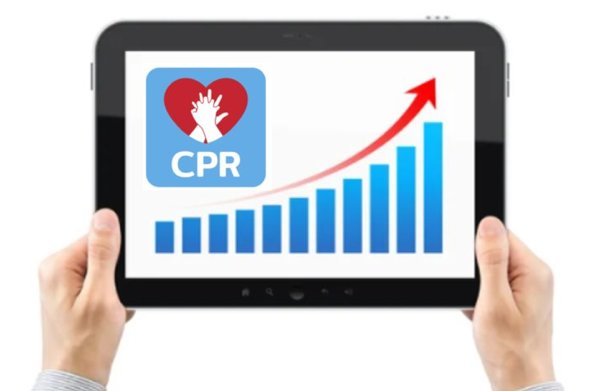The dramatic impact that the novel coronavirus has had on the United States and the world is undeniable. There are many different ways to view what has happened, and I do not wish to be political—I trust that everyone can handle politics in their own way.
For our sales conversations, though, I believe that we need to start getting back to business—whatever that means for your particular company as it relates to sales and marketing.
In that vein, we’ll talk about seven sales tactics over the next couple weeks to help us get back to business from where we now stand. These are realizations I’m finding to work well for me in my own media sales life, and that I’m sharing with others as part of my larger sales training efforts.
This week I’ll share four ideas to start those potentially awkward post-COVID client calls.
Idea 1: The time to get back to sales conversations is now.
There are a lot of people out there talking on the internet and social media about selling during COVID-19—and it was tough. I must reiterate: The conversations out there were tough.
And now, at the time of this writing, we’re almost two months into this and the conversations are largely OK now. Maybe one out of 50 folks I’m calling on has been personally impacted or has had something happen in their families, and they’re not ready to talk. I get that. I totally get that.
It’s for those folks, when I get them on the phone, that I just apologize, sympathize, and say, “Hey, when you’re ready to talk, I’m here.”
But one of the things I hear sales reps doing right now in my media sales training (marketers, too) is starting every conversation with, “Hey, Bob. How are you doing?” And that’s just not smart.
Now, if you’ve known the person for a considerable period of time, then you might consider them a colleague and you might start the conversation that way.
But if you’re calling on a new prospect, and you don’t know them at all, I think asking them about their personal health is not the best way to start the conversation.
In addition, everybody is starting the conversation that way. And unfortunately, it can lead to a pretty negative start to a sales call.
So what I like to do is put a little different spin on it. I might say, “Hi, Bob. I’ve got some news to share with you. Would you have time for a new idea?”
Or, “Hey, Bob. I see some light at the end of the proverbial business tunnel, and I’d love to chat with you a little about some new ideas. What do you think?”
I think that’s a very appropriate way to start a media sales conversation. In fact, I think it’s so important that I want to caution you again, when you start the conversation, “Hey, Bob. How are you doing?” you might get somebody who says back to you, “How the (blank) do you think I’m doing?”
And again, I’m not at all saying that you shouldn’t sympathize if you do get a negative response. What I’m saying is that starting the conversation with, “Hey, how are you doing?” is more likely to get things off to a fairly negative or generic start.
Idea 2: Recognize that a lot of people are still working from home.
Here’s what’s really interesting about COVID-19 on a positive side, if there is a positive side. And that is that everybody pretty much knows how to do a GoToMeeting or a Zoom meeting. They’re comfortable with it and that makes it a little bit easier to sell that way.
But since many people are still working from home, the odds of catching them in a non-distracting environment are good. There are always spouses and kids and pets, but there isn’t typically the normally distracting business environment. (And if you looked your customer or media sales prospect up on LinkedIn, you might be prepared and already know they have six kids, or whatever the case may be, as they’re working from home.)
Idea 3: Respect that prospecting and marketing times have changed.
So first off, let’s talk about pre-COVID times. In pre-COVID times I’d be telling you to call folks at 11:15 a.m. and 4:15 p.m. I choose 11:15 because most people don’t book meetings before lunch, so there’s a pretty good chance you’re going to get through to them. And then 4:15 because most people don’t book meetings before going home, so your chances of getting through to them are, again, pretty good.
Well, during COVID and post-COVID, 4 p.m. has become the new 5 o’clock. So for me that afternoon time block has definitely changed. It’s turned into more like a 3:15 prospecting block.
But what about the morning time block? I’m noticing in my media sales that a lot of people are responding to emails earlier in the day. So what I’ve been doing is changing the 11:15 time block to more like a 10 a.m. or 10:30 a.m. time block—specifically for prospecting.
Here’s the takeaway on that. Look at your client list, monitor your CRM, and look to see when people are responding to your media sales calls. Then, as always, friends, keep your emails short.
Recognize that from a marketing standpoint it’s best to reach people not at random times, but at times that you’re going to get the very best open rate. And be aware that times have changed.
Idea 4: Work with people on their deadlines.
In a post-COVID world, there’s going to be urgency of deadlines as people get back to some semblance of normalcy.
A lot of times in the media sales world we sell forward, meaning that we work with folks and we try to push them into our deadline driven world, rather than us working with their particular sales funnels or buying cycles.
So rather than asking needs, goals, and desires, what I’m really focusing on is, “What are your deadlines?” Or, “As you get back to work, what are the deadlines being placed on you?” And I look at this from a technology perspective, from a marketing perspective, and from a sales perspective—and then I work backwards from those deadlines.
Get really intimate with sales contacts’ and prospects’ deadlines. Then use their own deadlines to potentially drive the conversation forward into success as a salesperson.
Use these first four ideas to get those post-COVID calls fired up — and be sure to read Part 2 next week for three more tactics for sales success!
*********
 About Ryan: Ryan Dohrn is an award-winning ad sales training coach, a nationally recognized internet sales consultant and in international motivational speaker. He is the author of the best-selling ad sales book, Selling Backwards. He is the President and founder of Brain Swell Media and 360 Ad Sales Training, a boutique ad sales training and sales coaching firm with a detailed focus on ad sales training, internet consulting and media revenue generation. Ryan is also the Publisher of Sales Training World.
About Ryan: Ryan Dohrn is an award-winning ad sales training coach, a nationally recognized internet sales consultant and in international motivational speaker. He is the author of the best-selling ad sales book, Selling Backwards. He is the President and founder of Brain Swell Media and 360 Ad Sales Training, a boutique ad sales training and sales coaching firm with a detailed focus on ad sales training, internet consulting and media revenue generation. Ryan is also the Publisher of Sales Training World.
**********
Niche Media has the best events, education, and training in media! Our super niched-out events & content give target-audience publishers in the B2C, hobbyist, B2B, city & regional, and association markets the tools they need to build revenue, audience, and more.
********





